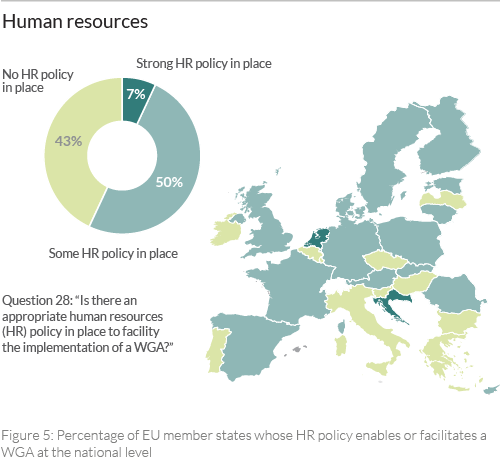WGA operationalisation and institutional practice
Different levels of coordination with institutional actors
One would expect that operationalising a WGA to external conflict and crisis requires sufficient coordination and cooperation among the relevant actors (cf. Table 2). In most EU member states, inter-ministerial cooperation (e.g. between the ministries of foreign affairs and defence) is generally quite formalised and well-established. The same holds true for coordination with relevant EU actors and other international organisations, such as the African Union, NATO, the OSCE and the UN. Much less formalised or sometimes wholly absent is cooperation with parliament and civil society. In part, this has to do with the fact that parliaments are rarely a key (f)actor in responses to conflicts given the typically fast-paced nature of the latter. Nevertheless, parliaments often hold significant budgetary powers and the final say over the deployment of military personnel to conflict areas.
Table 2
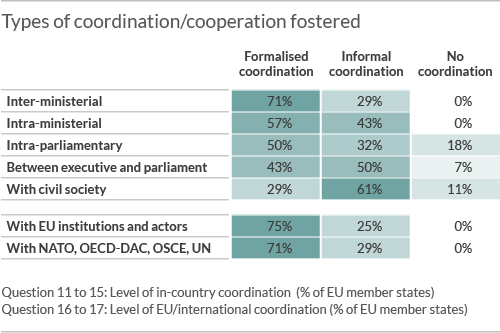
When assessing the data collected in Table 2, it is important to keep in mind that more formalised coordination does not necessarily imply more successful WGA practice. Country experts for some member states, such as the Czech Republic and Ireland, argue that informal WGA practice suffices to bring the relevant actors together in an effective way. Moreover, formalised and informal coordination often go hand in hand with and complement one another. This applies to the EU as well, where crisis (platform) meetings are convened both via WhatsApp as well as via the formal meeting requests of geographical desk officers of the EEAS. While Table 2 shows the most prevalent form of coordination in the member states, it is not meant to indicate that other forms of coordination or cooperation do not exist in any given country.
Four WGA enablers
In addition to effective coordination and cooperation between the relevant actors, WGA-related literature also identifies the following WGA enablers: (1) adaptations in the institutional setup and structures, (2) WGA-targeted human resources, (3) the presence of WGA leadership, and (4) joint tools and instruments facilitating the implementation of a WGA.
The figures below (Figures 2–5) provide an overview of the presence of these four enablers in the member states. It shows how the EU member states have mainly relied on changes in the institutional setup of their administration to foster a WGA (with almost 90% of the member states having made either minor or significant changes in that realm), while a specific human resources policy adapted to implementing a WGA is much less prevalent (with just over half of the member states featuring some changes in this realm).
Figure 2
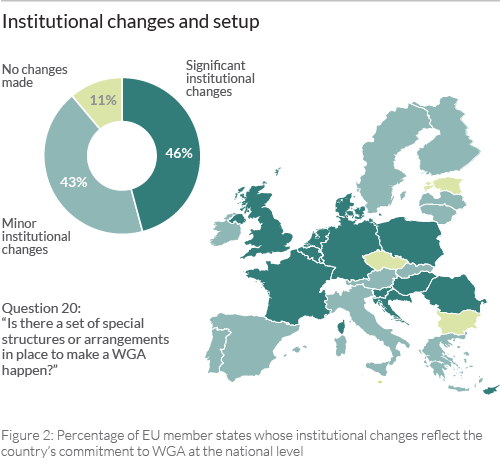
Figure 3
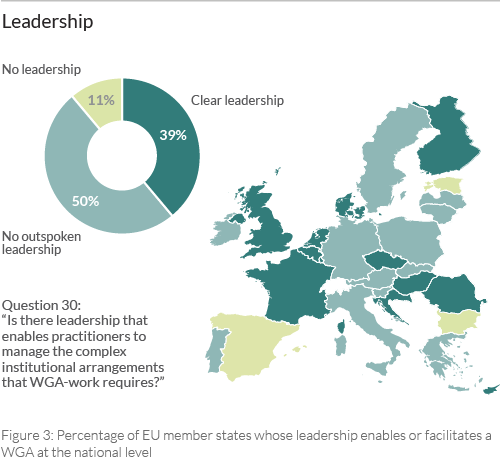
Figure 4
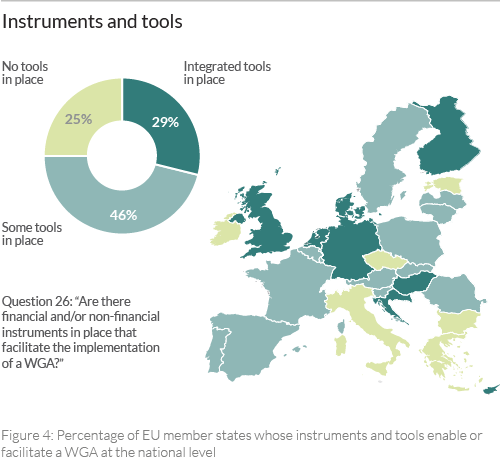
Figure 5
